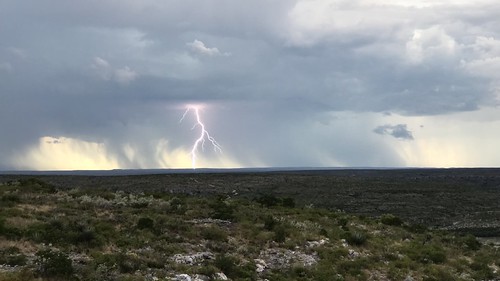sis of primary and metastatic tumor growth in live animals over time. As the lungs are one of the primary metastatic sites in patients with advanced RCC, this model provides a clinically relevant means of assessing the immunotherapeutic efficacy of Ad5mTRAIL+CpG against metastatic RCC. We demonstrate here that Ad5mTRAIL+CpG, given at the primary renal tumor site, leads to infiltration of tumorbearing kidneys by effector CD4 and CD8 T cells. It also leads to increased infiltration of CD4 T cells and CD8 T cells into the lungs. Elimination of both primary and metastatic tumors ensues and is mediated primarily by CD8 T cells. In addition, Ad5mTRAIL+CpG induces splenomegaly and a humoral response characterized by increased serum levels of total IgG, antiadenoviral IgG, and anti-dsDNA without progression to autoimmunity. These results demonstrate the feasibility of using a T cellstimulatory immunotherapy for the treatment of metastatic RCC, and suggest that Ad5TRAIL+CpG as a therapeutic approach may be an efficacious, yet well-tolerated option for patients with advanced disease. transduction as described. Renca-Luc cells were maintained in Complete RPMI supplemented with 0.05 mg/ml puromycin. Tumor challenge For IR tumor challenge, a skin incision was made on the left flank, and 26105 Renca or Renca-Luc cells were injected through the intact peritoneum into the left kidney. On d 7 following tumor challenge, mice were re-injected in the same kidney with T0070907 cost either sterile PBS, or 109 pfu of replication-deficient Ad5mTRAIL that encodes a membrane-bound version of full-length murine TRAIL protein with or without 100 mg CpG1826, in a 100 ml volume. Mice were sacrificed between d 2125, when untreated renal  tumors were palpable. In some experiments, CD4+ or CD8+ cells were depleted in vivo via i.p. injection of either 100 mg/mouse GK1.5 or 53.6.72 antibodies given on d 4, 6, 7, 14, and 21. Depletion efficacy was monitored by flow cytometric analysis of CD4 and CD8 staining of spleen samples in test mice; depletion of both T cell populations was found to be greater than 90%. In some mice, s.c. tumor challenges were performed by injecting 26105 RencaLuc cells into the right hind flank; s.c. tumors were allowed to grow for 37 d, at which time bioluminescent imaging was performed on live mice and excised lungs from euthanized animals. Bioluminescent imaging BLI was done using an IVIS 200 as described. Briefly, 10 min prior to imaging, mice were injected i.p. with 100 ml of a 15 mg/ml solution of D-Luciferin, then anesthetized via inhalation of oxygenated isoflurane. Live mice were imaged for 1 min. Excised organs were imaged separately with a 5 min exposure. Photon flux was calculated within a defined region of interest using Living Image software. Flow cytometry Tumors, lungs, and spleens were harvested, manually disrupted, then digested for 1530 min in HBSS containing 0.56 Wuensch units/ml of Liberase Blendzyme 3 and 0.15 mg/ml DNAse I, and prepared as described to generate single cell suspensions. Cells were stained with combinations of the following antibodies, and results acquired using multi-parameter flow cytometry on a BD LSR II then analyzed with FlowJo software. An expanded FS/SSC gate was used to encompass not PubMed ID:http://www.ncbi.nlm.nih.gov/pubmed/22182422 only resting and blasted lymphocytes, but larger DC and more granular macrophages, as appropriate. Doublets were excluded by standard FSC-A/FSC-W gating. Dead cells were excluded via Hoechst positivity. For DC: CD11c-biotin, streptavidin-
tumors were palpable. In some experiments, CD4+ or CD8+ cells were depleted in vivo via i.p. injection of either 100 mg/mouse GK1.5 or 53.6.72 antibodies given on d 4, 6, 7, 14, and 21. Depletion efficacy was monitored by flow cytometric analysis of CD4 and CD8 staining of spleen samples in test mice; depletion of both T cell populations was found to be greater than 90%. In some mice, s.c. tumor challenges were performed by injecting 26105 RencaLuc cells into the right hind flank; s.c. tumors were allowed to grow for 37 d, at which time bioluminescent imaging was performed on live mice and excised lungs from euthanized animals. Bioluminescent imaging BLI was done using an IVIS 200 as described. Briefly, 10 min prior to imaging, mice were injected i.p. with 100 ml of a 15 mg/ml solution of D-Luciferin, then anesthetized via inhalation of oxygenated isoflurane. Live mice were imaged for 1 min. Excised organs were imaged separately with a 5 min exposure. Photon flux was calculated within a defined region of interest using Living Image software. Flow cytometry Tumors, lungs, and spleens were harvested, manually disrupted, then digested for 1530 min in HBSS containing 0.56 Wuensch units/ml of Liberase Blendzyme 3 and 0.15 mg/ml DNAse I, and prepared as described to generate single cell suspensions. Cells were stained with combinations of the following antibodies, and results acquired using multi-parameter flow cytometry on a BD LSR II then analyzed with FlowJo software. An expanded FS/SSC gate was used to encompass not PubMed ID:http://www.ncbi.nlm.nih.gov/pubmed/22182422 only resting and blasted lymphocytes, but larger DC and more granular macrophages, as appropriate. Doublets were excluded by standard FSC-A/FSC-W gating. Dead cells were excluded via Hoechst positivity. For DC: CD11c-biotin, streptavidin-